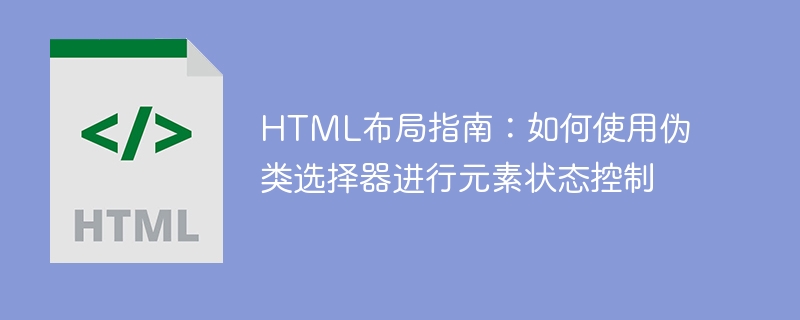

HTML Layout Guide: How to use pseudo-class selectors for element state control
Introduction:
In web design, layout is an extremely important part. Various layout methods can be achieved using HTML and CSS, but sometimes we need to control the layout effect based on the state of the element. In this article, we will learn how to use pseudo-class selectors to control the state of elements and give specific code examples.
1. What is a pseudo-class selector:
The pseudo-class selector is a special selector in CSS that allows us to select and apply specific styles based on the state of the element. The syntax of a pseudo-class selector is to add a colon (:) and the state name after the selector, such as: hover, : active, etc.
2. Common pseudo-class selectors and their application examples:
<style>
.box {
width: 200px;
height: 200px;
background-color: red;
}
.box:hover {
background-color: blue;
transition: background-color 0.5s ease-in-out;
}
</style>
<div class="box"></div><style>
.button {
width: 100px;
height: 50px;
background-color: blue;
color: white;
border: none;
}
.button:active {
background-color: green;
}
</style>
<button class="button">点击我</button><style>
.input {
width: 200px;
height: 30px;
border: 1px solid #ccc;
}
.input:focus {
border-color: blue;
background-color: lightblue;
}
</style>
<input type="text" class="input"><style>
.checkbox {
width: 20px;
height: 20px;
border: 1px solid #ccc;
}
.checkbox:checked {
background-color: blue;
}
</style>
<input type="checkbox" class="checkbox">Summary:
This article introduces how to use pseudo-class selectors to control the state of elements, including common ones such as :hover, :active, :focus and :checked Application examples of pseudo-class selectors. By flexibly using these pseudo-class selectors, we can add various interactive effects to web page layout and improve user experience.
By reading this article, I believe that readers have understood the basic application of pseudo-class selectors and can use them flexibly in actual layouts. I hope this article is helpful to readers, thank you for reading!
The above is the detailed content of HTML layout guide: How to use pseudo-class selectors for element state control. For more information, please follow other related articles on the PHP Chinese website!




